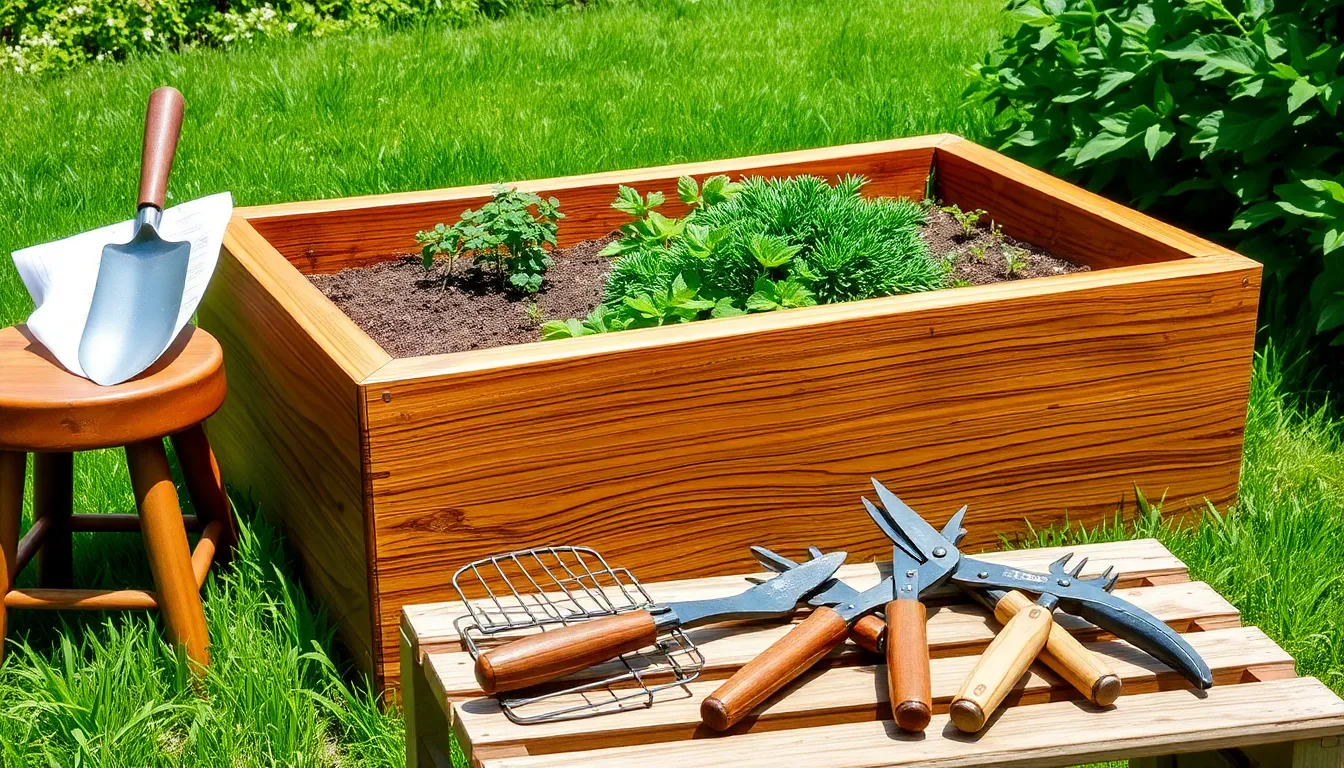Gardening is a journey that begins with the right tools, and for those eager to elevate their green spaces, building a raised garden bed can be a transformative experience. Whether you’re a novice gardener looking to dip your toes into the soil or a seasoned horticulturist seeking to refine your craft, understanding the essential tools required for constructing a raised bed is crucial. Raised garden beds offer numerous benefits, from improved drainage and soil quality to easier access and pest control, making them a wise investment for any garden enthusiast.
Grasping the importance of proper tools can make the difference between a fruitful garden and a frustrating endeavor. In this article, we will guide you through the must-have tools that will simplify the process of building a raised garden bed, providing a sturdy and fertile foundation for your plants. From choosing the right materials to selecting the perfect location and tools for assembly, we’ll cover everything you need to create a thriving garden space that suits your needs and style.
By the end of this guide, you’ll have the confidence and knowledge to gather your toolkit and start building your raised garden bed with ease and precision. You’ll learn about tools that enhance efficiency, ensure safety, and ultimately lead to a more enjoyable gardening experience. So, grab your gloves, and let’s dig into the essentials that will empower you to cultivate a beautiful, bountiful garden.
Choosing the Right Garden Tools
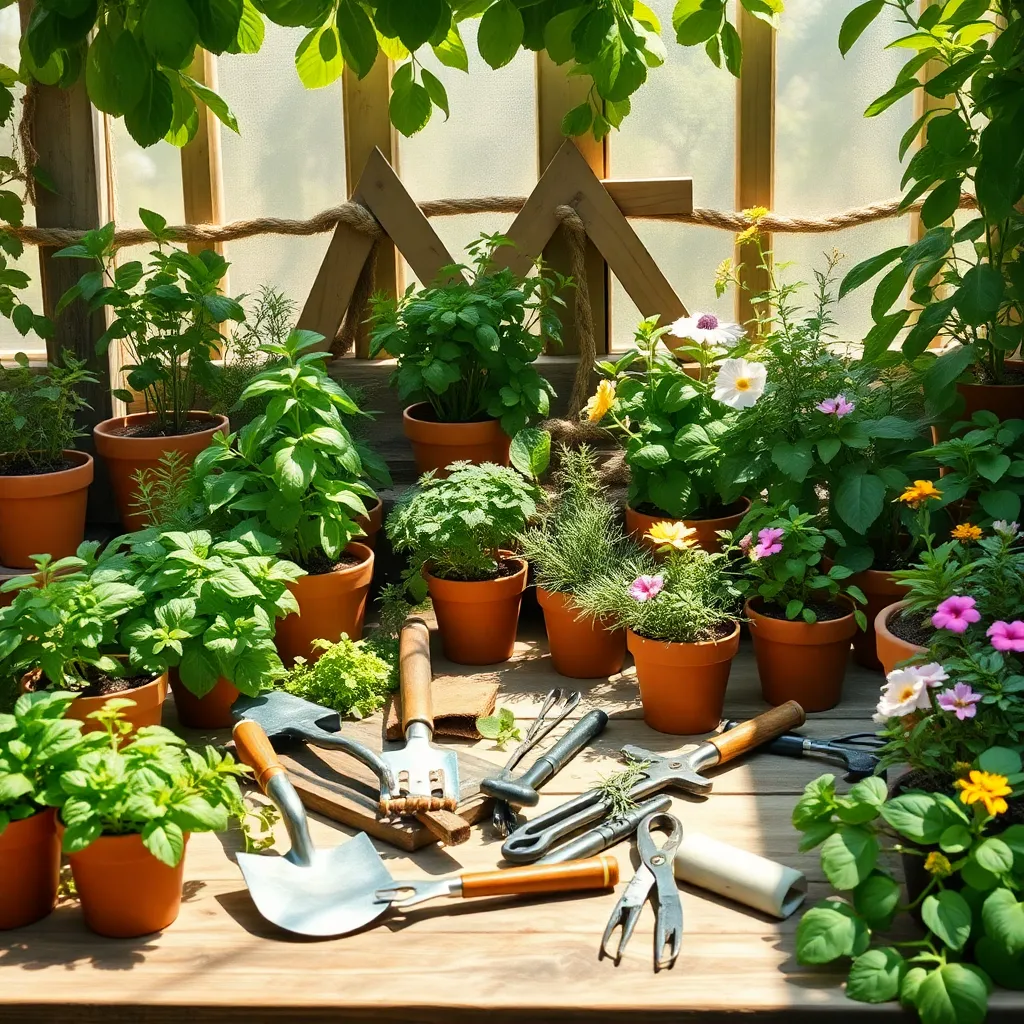
To begin with, selecting the right tools for building a raised garden bed is crucial for ease and efficiency. Investing in quality tools like a sturdy shovel and a reliable rake will make the process much smoother and enjoyable.
For those just starting, consider acquiring basic tools such as a trowel, hand fork, and garden gloves. These tools are essential for tasks like planting and weeding, ensuring you can tend to your garden without hassle.
Experienced gardeners might benefit from specialized tools like a soil knife or hori-hori, which can handle a variety of tasks from cutting to digging. These multipurpose tools can greatly enhance your gardening efficiency, especially when working with compact or rocky soils.
When choosing materials for your raised bed, opt for weather-resistant wood like cedar or redwood, as they are both durable and naturally resistant to rot. If your region experiences heavy rainfall, ensure the wood is properly treated to withstand moisture.
It’s also important to consider the ergonomics of your tools, especially if you’ll be spending long hours in the garden. Look for tools with comfortable grips and lightweight designs to reduce strain on your hands and back.
Finally, remember that maintenance is key to keeping your tools in top condition. Regularly clean and oil metal parts to prevent rust, and store them in a dry place to ensure they last for many gardening seasons to come.
Essential Tools for Bed Construction
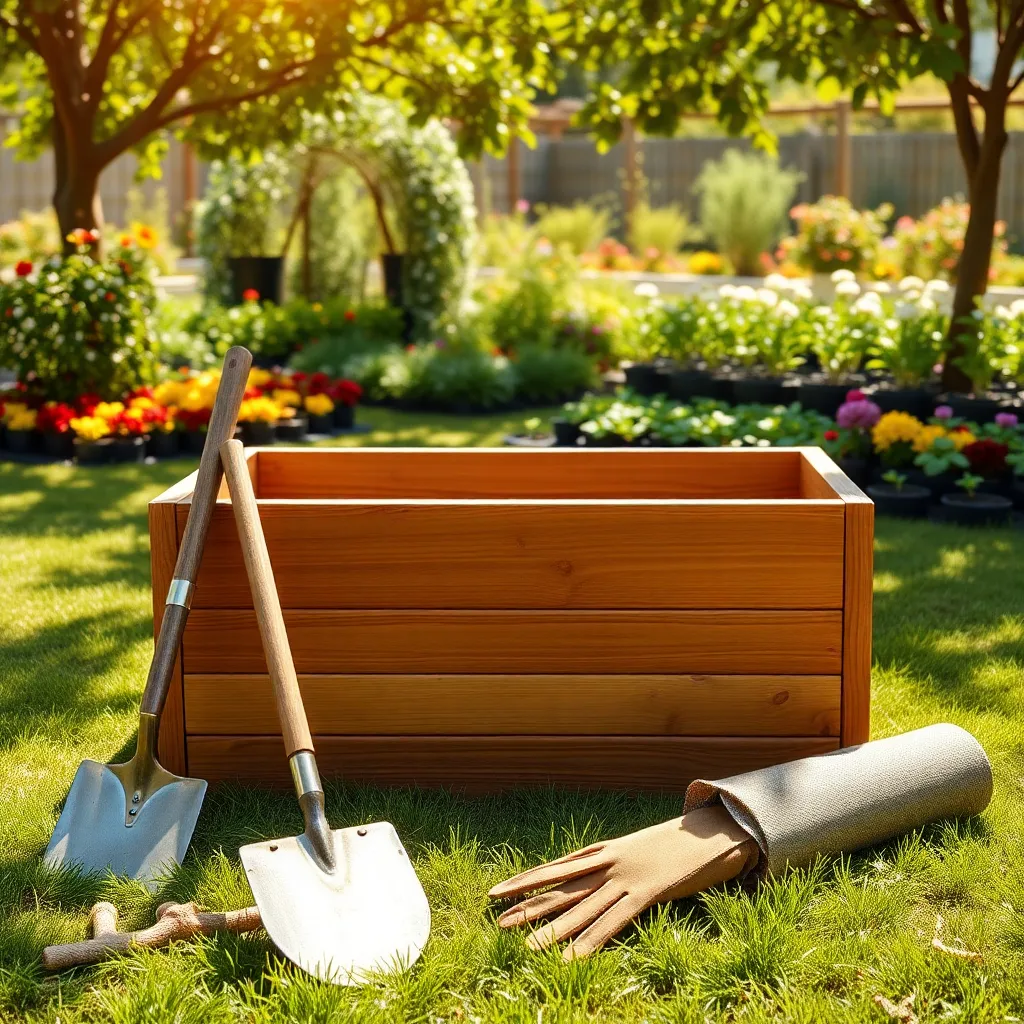
A sturdy shovel is indispensable when constructing a raised garden bed. It helps you dig and move soil efficiently, ensuring a solid foundation for your plants.
For precise cutting of wooden boards or planks, a handsaw is a must-have tool. This allows you to customize the size and shape of your raised bed, accommodating your specific gardening space.
Investing in a quality cordless drill can significantly ease the process of assembling the bed. It speeds up the task of screwing boards together, giving you more time to focus on planting.
Using a level during the construction phase ensures that your raised bed is even. An uneven bed can lead to poor water distribution, which can affect plant growth negatively.
A wheelbarrow is crucial for transporting materials like soil and compost to your garden bed. This not only saves time and effort but also prevents unnecessary strain on your body.
Consider acquiring a good pair of gardening gloves to protect your hands from splinters and blisters. Gloves allow for a firm grip on tools while keeping your hands clean and safe.
Once your bed is constructed, fill it with a mixture of topsoil, compost, and other organic materials for optimal plant growth. This combination provides essential nutrients and enhances soil structure, promoting healthy root development.
Cutting and Measuring Equipment
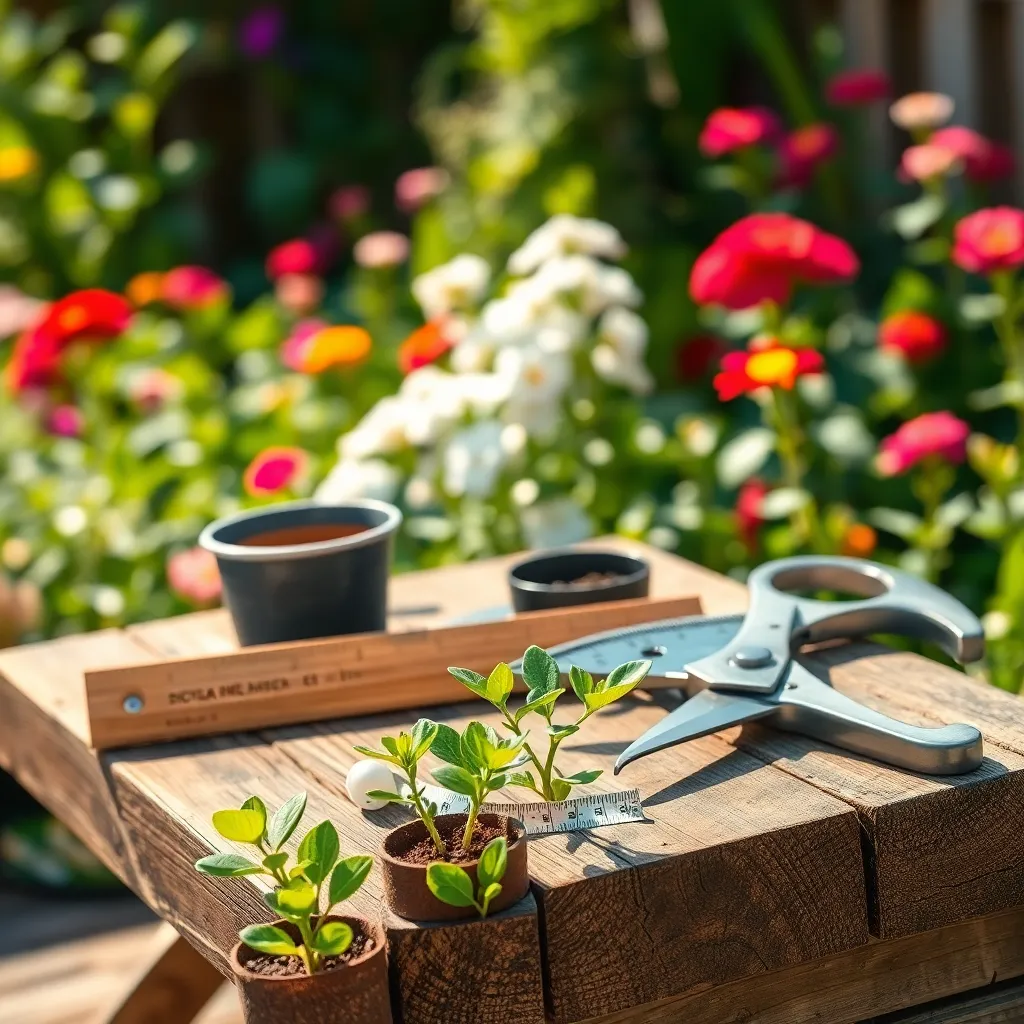
When building a raised garden bed, having the right cutting and measuring equipment is crucial for precision and ease of construction. A reliable tape measure is essential to ensure that your garden bed dimensions are accurate, helping you efficiently plan and execute your project.
A sharp hand saw is invaluable for cutting wooden boards to the desired lengths, ensuring clean cuts that fit snugly together. For those working with metal or thicker materials, consider using a power saw to save time and achieve precise results.
Gardeners often overlook the importance of a good set of pruning shears, which can also be used to cut smaller components like wires or plastic ties. Choose shears with comfortable grips and stainless steel blades for longevity and ease of use.
For advanced gardeners, a carpenter’s square can help maintain perfect right angles, ensuring that your raised bed is both functional and aesthetically pleasing. This tool is particularly useful when creating custom designs or when working with larger, more intricate structures.
Soil Preparation and Tilling Tools
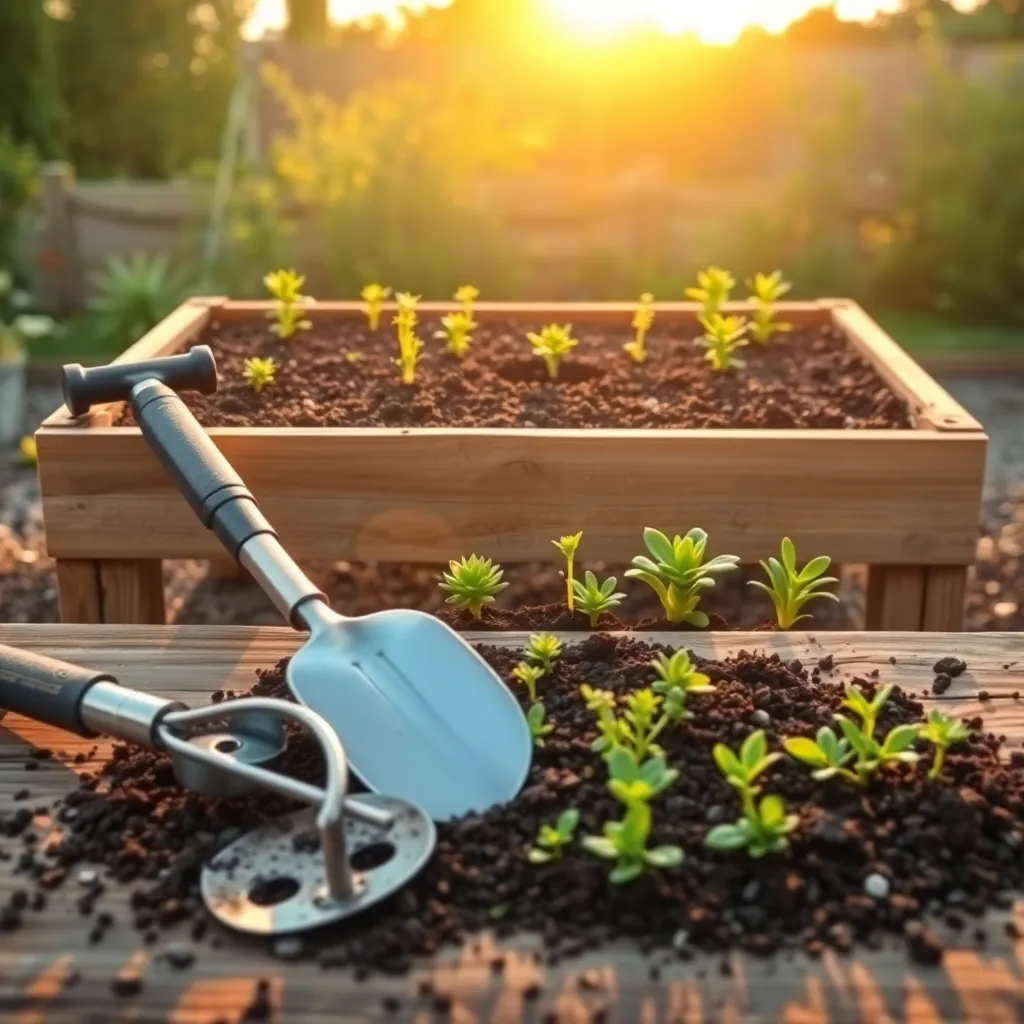
Proper soil preparation is crucial for the success of your raised garden bed. Begin by selecting a well-draining soil mix, ideally a blend of topsoil, compost, and organic matter to ensure rich nutrients for your plants.
Before you start planting, it’s important to loosen the soil using the right tools. Consider using a garden fork or tiller to break up compacted soil, which will enhance air circulation and root growth.
Incorporating organic matter into your soil is essential for maintaining healthy plant development. You can add materials such as peat moss, leaf mold, or well-rotted manure to improve soil structure and fertility.
For small raised beds, a hand trowel or a mini-tiller can be effective for light tilling. These tools allow you to work efficiently within confined spaces, ensuring that every corner of your bed is properly prepared.
Regularly amending your soil with compost is key to sustaining its nutrient levels over time. Aim to add 1-2 inches of compost annually, gently mixing it into the top layer to replenish essential nutrients.
Advanced gardeners might consider testing their soil pH to tailor their amendments precisely. Use a simple pH test kit to ensure your soil is in the optimal range, typically between 6.0 and 7.0, for most vegetables.
Maintenance Tools for Longevity
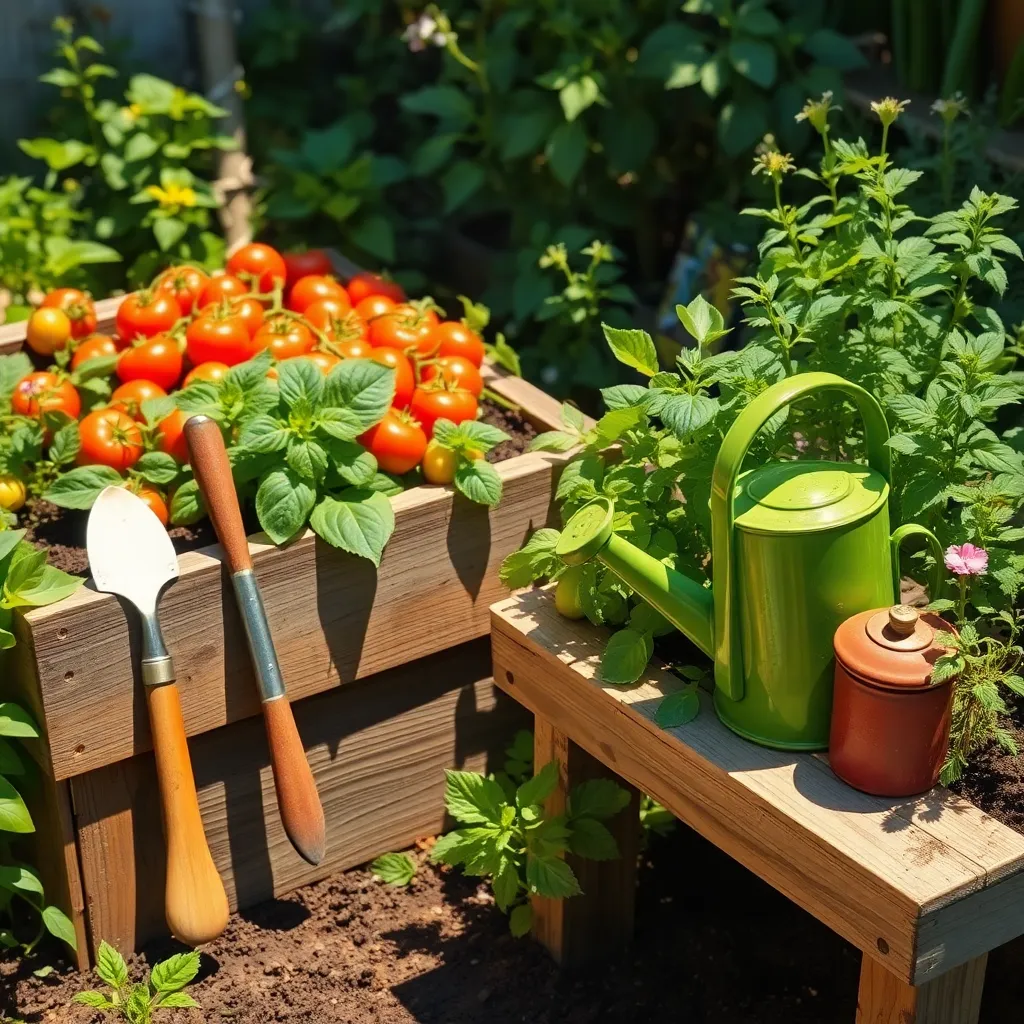
To ensure the longevity of your raised garden bed, having the right maintenance tools is essential. Start by investing in a quality pair of pruning shears, which will help you keep your plants healthy and encourage new growth. Regular pruning prevents overcrowding, allowing sunlight and air to reach all parts of the plant, which is crucial for their overall health.
Another critical tool is a sturdy garden hoe, which is perfect for weeding between rows and maintaining soil aeration. Keeping the soil loose and free of weeds not only supports plant health but also minimizes competition for nutrients. For those with larger beds, consider a long-handled hoe to reduce strain on your back while working.
Gardeners should also consider purchasing a durable watering can or hose with a spray nozzle to ensure consistent watering. Proper hydration is vital for plant health, but overwatering can lead to root rot, so aim for a balance by checking the soil moisture regularly. A soil moisture meter can be a helpful investment for beginners unsure of their watering routine.
Lastly, a garden fork can be incredibly useful for turning compost or mixing soil amendments into your garden bed. Incorporating organic matter such as compost or well-rotted manure can significantly improve soil structure and fertility. For advanced gardeners, rotating these amendments seasonally can lead to even better yields and healthier plants.
Conclusion: Growing Success with These Plants
In the journey of building a robust raised garden bed, we’ve explored five essential concepts that resonate deeply with nurturing relationships. First, the importance of a strong foundation reminds us to cultivate trust and understanding. Next, selecting quality materials parallels choosing the right values and communication methods. Third, measuring and planning highlight the significance of setting shared goals. Fourth, proper soil preparation signifies the need for emotional nourishment and patience. Lastly, consistent maintenance echoes the ongoing effort required to keep relationships thriving.
As a first step, consider applying these principles by having a heartfelt conversation with a loved one to assess and enhance your relationship foundation. This simple yet powerful action can pave the way for deeper connection and growth.
Remember, relationships are like gardens—thriving with care and attention. Save or bookmark this article to revisit these concepts and maintain your relationship’s vitality. With these tools at your disposal, you’re well-equipped to cultivate a flourishing relationship landscape. Embrace this journey with optimism, as your commitment today sets the stage for enduring relationship success tomorrow. Together, let’s nurture the garden of our connections with love and diligence.

